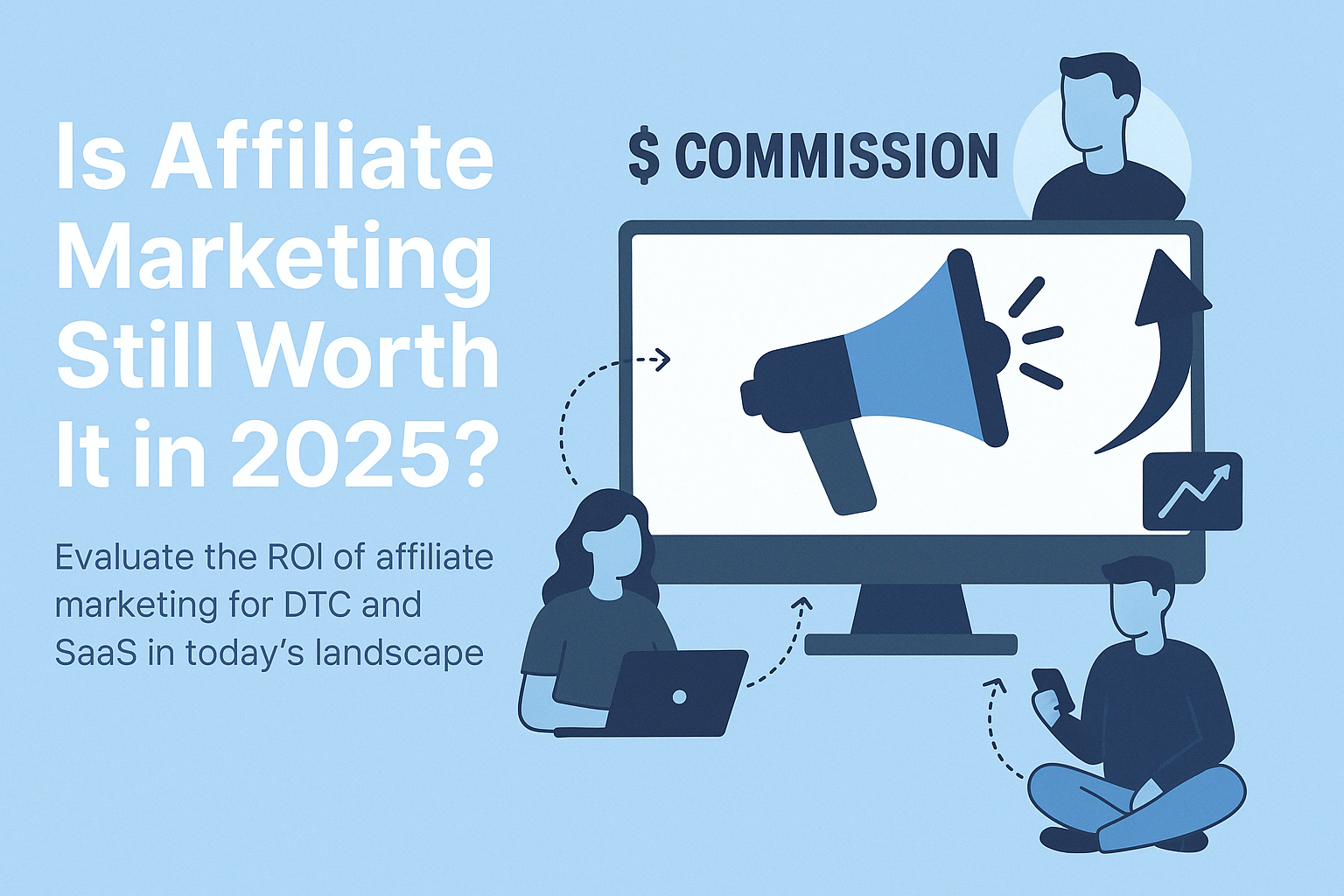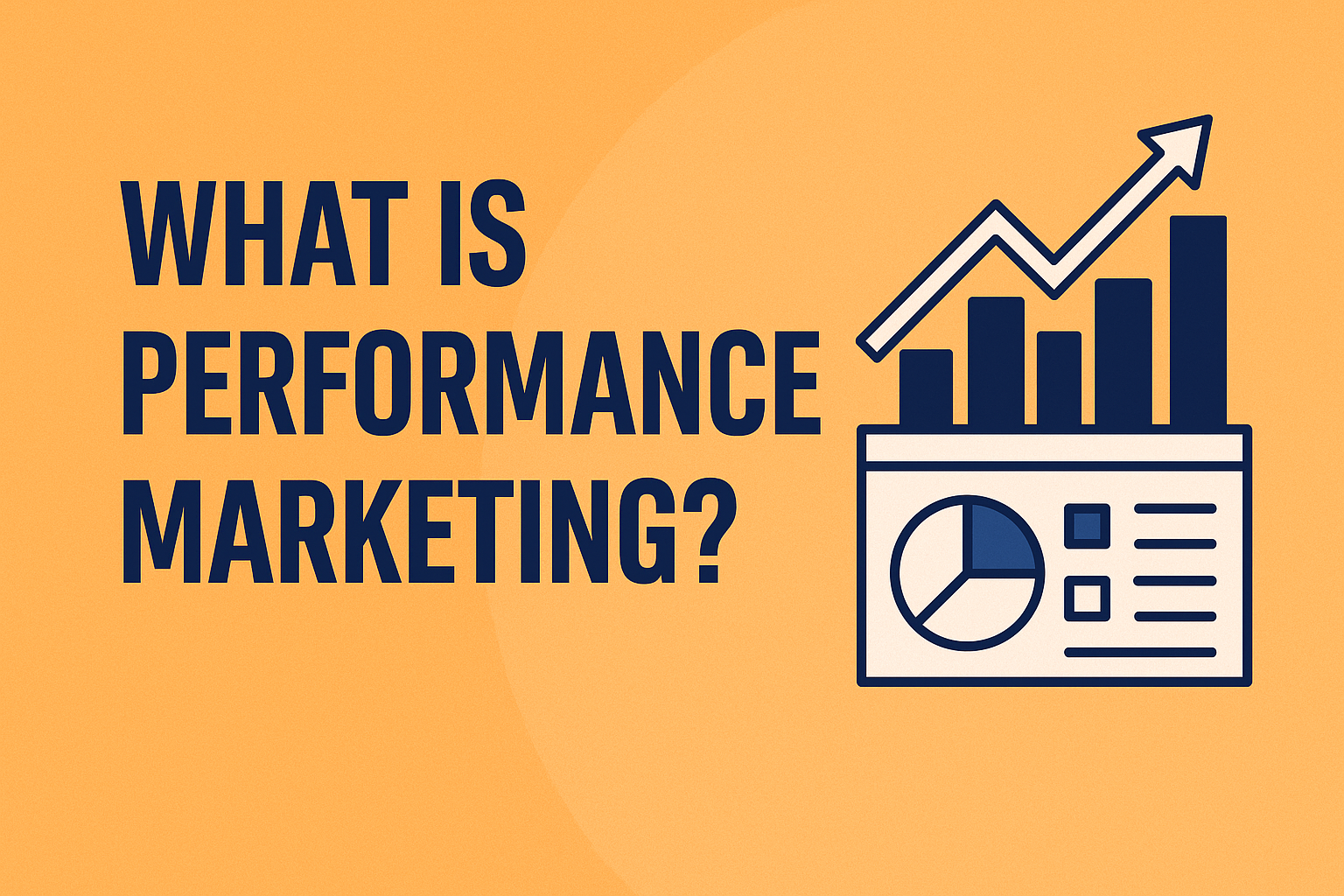
Should Your Brand Use Affiliate Marketing in 2025?
Affiliate marketing has been around since the early days of the internet, but its relevance and effectiveness have continued to evolve. In 2025, as brands face rising acquisition costs, evolving consumer privacy laws, and platform algorithm changes, the question arises: Is affiliate marketing still worth it? The short answer: Yes but only if done right.This article will guide you through the latest affiliate marketing trends, benefits, limitations, and execution strategies tailored for DTC brands, SaaS companies, and performance marketers. Table of Contents 1. What is Affiliate Marketing? Affiliate marketing is a performance-based marketing strategy where brands pay affiliates (publishers, influencers, bloggers) a commission for driving conversions — whether that’s clicks, leads, or sales. Key Terms: 2. Why Affiliate Marketing Still Matters in 2025 Here’s why affiliate marketing hasn’t just survived, but is thriving in 2025: Cost-Efficient: Brands only pay for performance, not impressions or reach. No upfront ad costs, unlike paid media. Privacy-Friendly: Post-iOS 14.5 and GDPR, tracking users through ads has become harder. Affiliates drive traffic directly through their content, sidestepping platform-level attribution issues. High Trust: Affiliate content is often native and trusted, especially when published by influencers, bloggers, or niche media outlets. Scalable: You can grow your program from 5 to 5,000 affiliates without increasing fixed costs. 3. Affiliate Marketing vs Influencer Marketing While the two often overlap, they’re distinct: Metric Affiliate Marketing Influencer Marketing Payment Model Performance-based (CPS) Flat fee or hybrid Focus Conversions/Sales Reach/Awareness Best For Scalable ROI campaigns Brand building Tracking Method Links/codes View + engagement-based 2025 Trend: Many influencers are now switching to affiliate-first models to monetize their followings better and provide proof of performance to brands. 4. How Affiliate Marketing Works in 2025 Here’s a simplified version of the current affiliate funnel: Modern tracking includes: 5. Types of Affiliate Programs Revenue Share (CPS – Cost Per Sale) Most common model affiliate earns a % per sale. Flat Fee per Lead (CPL) Useful for SaaS, subscriptions, and lead-gen funnels. Tiered Commission Incentivizes affiliates to sell more with escalating commissions. Hybrid (Influencer + Affiliate) Pay a base + performance bonus to top-tier creators. 6. Affiliate Marketing for DTC Brands Direct-to-Consumer (DTC) brands love affiliate marketing because it: Best-performing content formats in 2025: DTC Tip: Offer exclusive discount codes to affiliates. They work exceptionally well on TikTok, IG Stories, and YouTube descriptions. 7. Affiliate Marketing for SaaS Companies SaaS businesses benefit from recurring revenue and longer customer LTV.This makes affiliate marketing a strong channel if structured correctly. Popular SaaS affiliate models: Successful strategies: 8. Common Pitfalls to Avoid Neglecting Affiliate VettingDon’t auto-approve everyone. Poor affiliates can damage your brand. Lack of Clear GuidelinesAffiliates need creative assets, CTAs, messaging frameworks, and branding rules. Ignoring Attribution IssuesUse multiple attribution methods (link + code + post-purchase survey) for accuracy. Late PayoutsPaying on time builds loyalty. Delays damage trust and program reputation. One-Size-Fits-All CommissionReward high-performers with custom commission tiers or bonuses. 9. Future Trends in Affiliate Marketing Influencers as Affiliates Micro and nano-influencers are now demanding performance-based models. Expect more “affiliate-only” creators in 2025. AI-Powered Matching New affiliate platforms use AI to pair brands with top-fit affiliates based on niche, past performance, and audience overlap. Live Shopping + Affiliate TikTok Shop, Amazon Live, and Meta’s in-app shopping enable affiliate-powered commerce during livestreams. Affiliate UGC Licensing Brands are starting to license affiliate-generated content for use in ads, email, and website creatives — improving ROI beyond the affiliate sale. 10. Affiliate Tools and Platforms in 2025 Here are the top tools for managing affiliates in 2025: Tool Best For Features Refersion DTC brands Shopify integration, payouts, UTM tracking PartnerStack SaaS programs Tiered commission, analytics, CRM integration Impact.com Large-scale affiliate programs Discovery marketplace, deep reporting Tapfiliate Simple startup programs Easy setup, coupons, email templates UpPromote Influencer + affiliate mix Ideal for TikTok & IG creators 11. ROI: How to Measure Success Affiliate marketing ROI should be judged not just by last-click sales, but also by: Example: If an affiliate drives 100 customers at $40 CPA and each has an average LTV of $180, the ROI is significant compared to $90+ CPAs on Meta or Google. 12. FAQs About Affiliate Marketing in 2025 Q1: Is affiliate marketing still profitable in 2025? Yes. If set up with the right partners, tracking, and incentives, affiliate marketing remains one of the highest ROI channels, especially for DTC and SaaS. Q2: What commission rates should I offer? It varies: Q3: Should I use an affiliate network or build in-house? Q4: How do I recruit affiliates? Q5: What verticals benefit the most from affiliate marketing? Should Your Brand Use Affiliate Marketing in 2025? Affiliate marketing remains one of the most cost-efficient, trust-driven, and scalable strategies in the marketer’s toolkit. Whether you’re a fast-scaling DTC brand or a SaaS startup, building the right affiliate infrastructure today can pay off massively over the next 12 months. Done correctly, affiliate marketing can: So, if you’re wondering whether your brand should invest in affiliate marketing in 2025 the answer is absolutely. Just be strategic, patient, and performance-focused.



